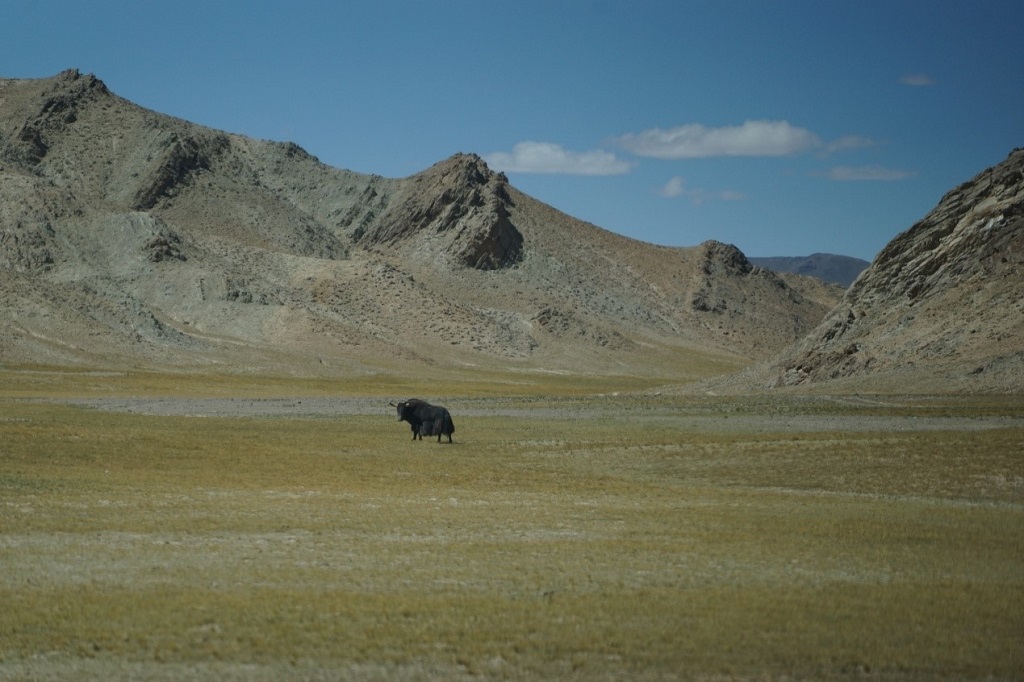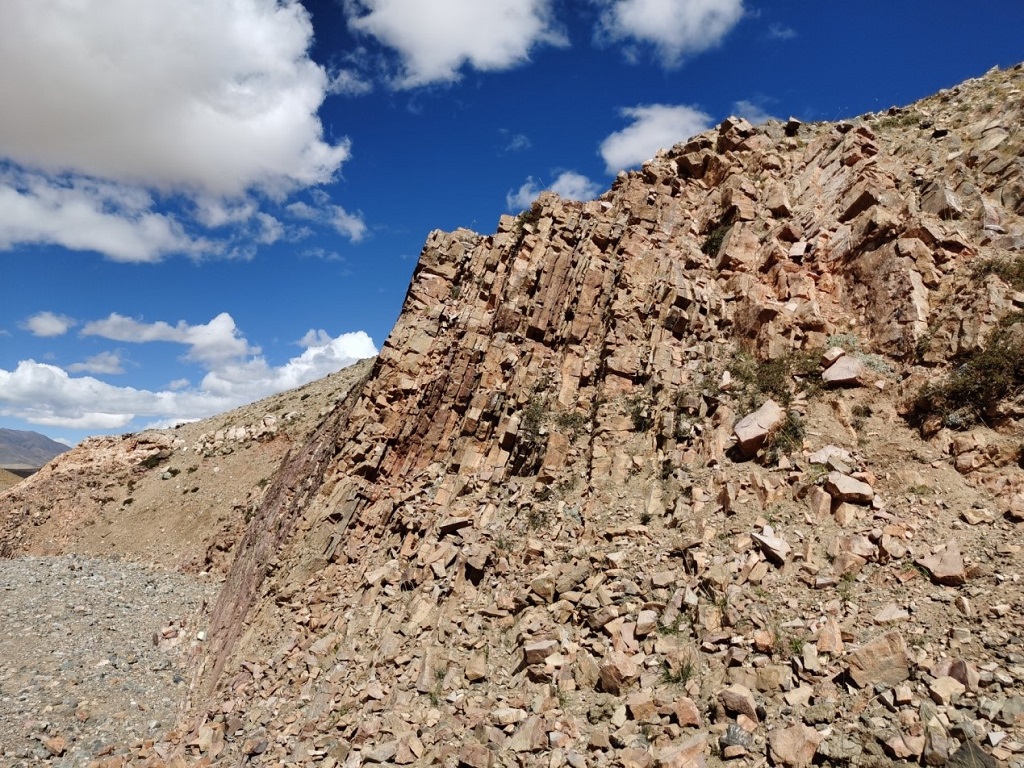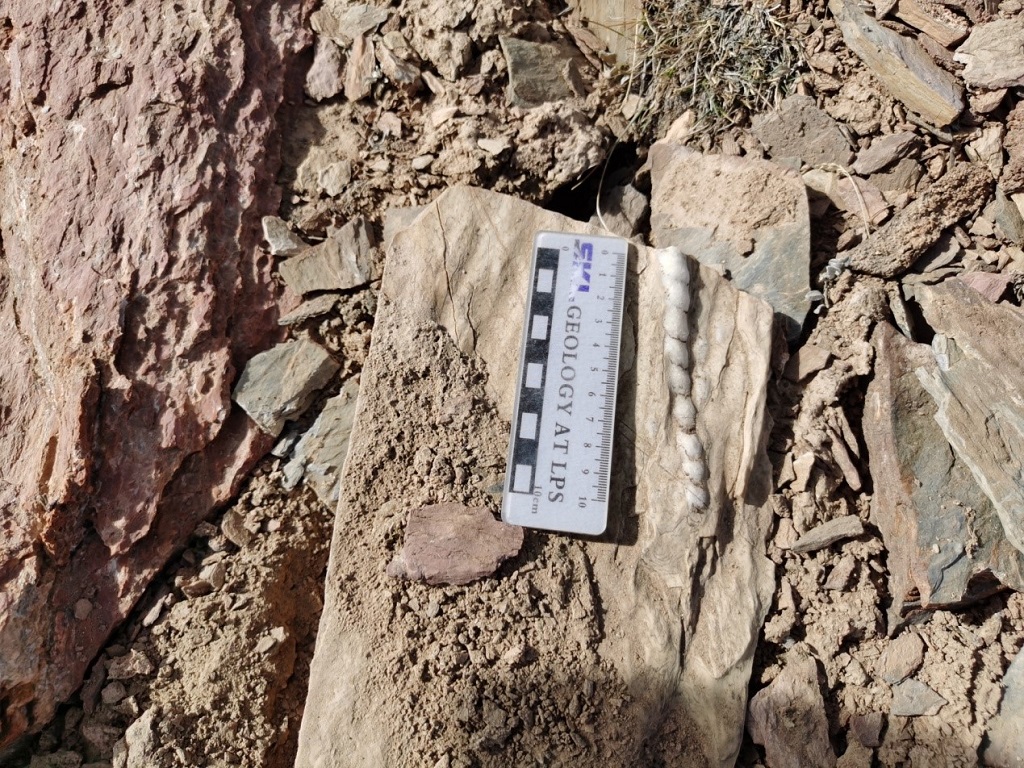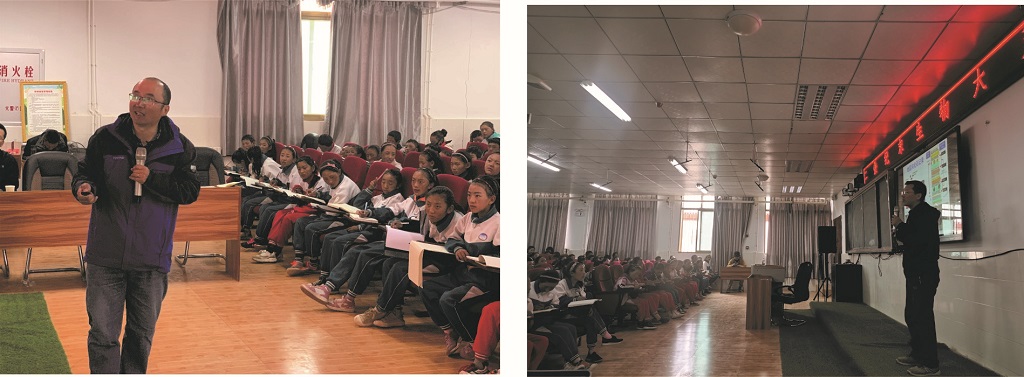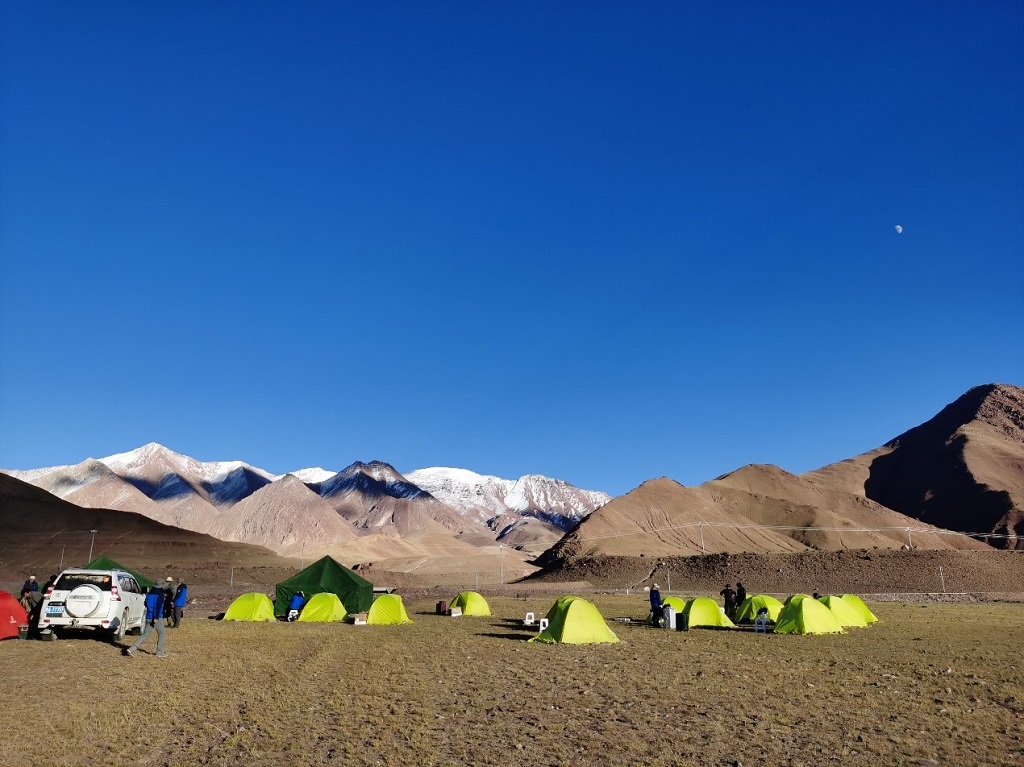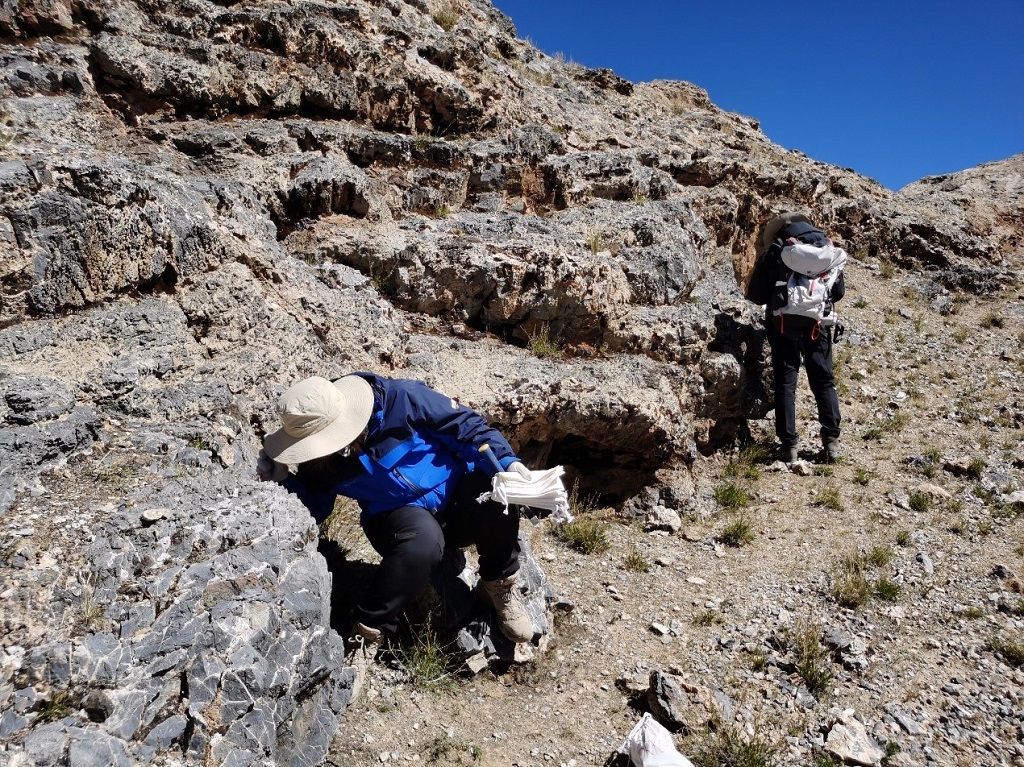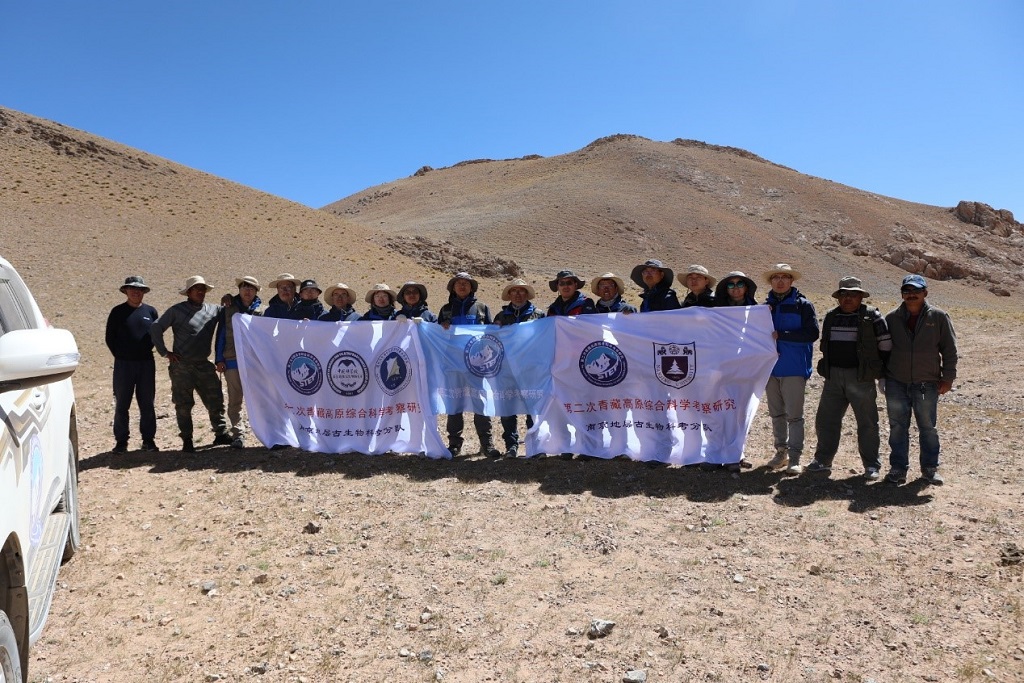Stop III: Rongma Town
Finishing the field investigation in the uninhabited area, the expedition team returned from Raggyorcaka to Rongma Township on September 19. After the pastoral relocation in previous years, only a few families stayed in the resident township. The team found some empty houses in the township and settled down briefly. However rudimentary the housing conditions were, they were warmer than tents.
Located near the suture zone, this region suffered from serious stratigraphic metamorphism, leaving a handful of fossils available to uncover. Most amazingly, during the scientific research in the deep trench of Jiaomuchaka, the strata there were found to contain terrace-phase tuffs, deep-water-phase siliciclastic rocks, and haphazard gravels. It was impossible to spatially determine the contact between these strata. So, the team sampled extensively in an attempt to reconstruct their evolutionary history from microsomal fossils.
East bank of Yibug Caka is also extensively distributed with Permian strata. However, the on-spot-survey found tuffs here suffered from serious stratigraphic metamorphism and barely feasible to find fossils of values.
Siliciclastic strata in the Jiaomu Caka ditch (Photo by Zhang Yichun)
But the suture zone also has some advantages, such as offering opportunity to unearth some ancient strata. For instance, a wealth of Ordovician hornstone fossils was discovered by the Mount Mayer Kangri. These 400 million-year-old fossils record the seafloor environment at that time.
Ordovician hornstone fossils by Mount Mayer Kangri (Photo by Zhang Yichun)
On September 23, upon end of the short survey in Rongma region, the expedition team left Qiangtang Reserve for Nyima County for a one-day stay there. On September 24, the team mailed the 1.5t samples collected in the uninhabited area to Nanjing, and replenished some supplies for survey in the last work area.
What’s worth mentioning is that researchers, Zhang Yichun and Zhang Hua, gave two scientific lectures at the Nyima County Middle School, titled “Fossil – Elf on Qinghai-Tibet Plateau” and “Mass Extinction at End of Permian”, respectively. While the students took intense interest in these strange things, we felt delighted to make our contribution to the science communication.
Expedition members deliver lectures at Nyima County Middle School (Photo by Jiang Pengfeng and Lv Wenjun)
Stop IV: Wenbu Town
After supplies were replenished in Nyima County, the team drove to Wenbu Township on September 25. We took it for granted that it would be easier to find a place for a rest where there are more residents. But the truth is it cost half a day to find a camping spot, because water source is rare in Wenbu Town that stands between Dangqiong Lake in the north and Dangreyong Lake in the south. Finally, we set up the tents by a stream between the two lakes. The wind was so strong at night that the tents would have been blown away if not pressed with huge stones.
Camp in Wenbu Township (Photo by Zhang Yichun)
The gale blew away our sleepiness, but not a bit of our passion to the investigation. Especially when perfect Permian strata were spotted by Dangqiong Lake, the team members couldn’t wait to climb up the nearly 50°mountain to collect sediment and fossil samples. This profile exposes moraines, post-glacial clastic rocks, and upper tuffs. Mr. Zheng Quanfeng, a sedimentologist, said that this is the most beautiful stratigraphic sequence he has ever seen under the transition from icehouse to greenhouse climate. This profile may contain the secrets of the paleobiogeographic evolution.
Permian profile in Wenbu Town (Photo by Zhang Yichun)
On September 28, the expedition team also uncovered the carbonate stratum of the Middle Permian Lower Permian Group by the Dangreyong Lake, and a load of brachiopod, fusulinid, coral and foraminifera fossils. These fossils tell us that the Lhasa Massif was very stable at that time, and the warm shallow sea created abundant fossils. These fossils remind us of the azure underwater world some 265 million years ago.
Permian profile by Dangreyong Lake (Photo by Zhang Yichun)
The summary from the Expedition Team
During the nearly one-month scientific expedition to north Tibet, the 25-member expedition team traversed different massifs in the region to cover a 4700km-long journey and collect about 3 tons fossil and rock samples. In terms of scientific publicity, 12 delayed live broadcasts and more than 50 short science videos were launched, and 22.845 million views were registered on Weibo.
It marks a challenging expedition for us because: I) We were assigned heavy tasks for both scientific investigation and scientific communication; II) a great many members were engaged, which may turn any tiny negligence into major safety hazards; and III) the expedition destination in north Tibet, high in altitude, big of temperature difference, and frequently visited by wildlife, presented considerable challenges to the mind and body of the team members. However, the team members inherited and carried forth the hard-working and teamwork spirit of the FTEP scientists. The expedition team members, media personnel, communication security personnel, drivers and cooks made full cooperation and worked hard together to overcome various unexpected situations and difficulties, eventually bringing this expedition to a successful end
The Tibetan Plateau functions as the natural laboratory for research of the earth science. The evolution of the Tibetan Plateau has left us many urgent topics to examine and study. The successful implementation of this expedition gives us greater confidence to continue the scientific research in the blank and difficult areas of Tibetan Plateau in 2021, and to discover important fossils and strata in north Tibet. After all, interpreting the changes of paleogeography and the evolution of paleoclimate in deep time has been the driving force of our persistent research.
Part of the expedition team

